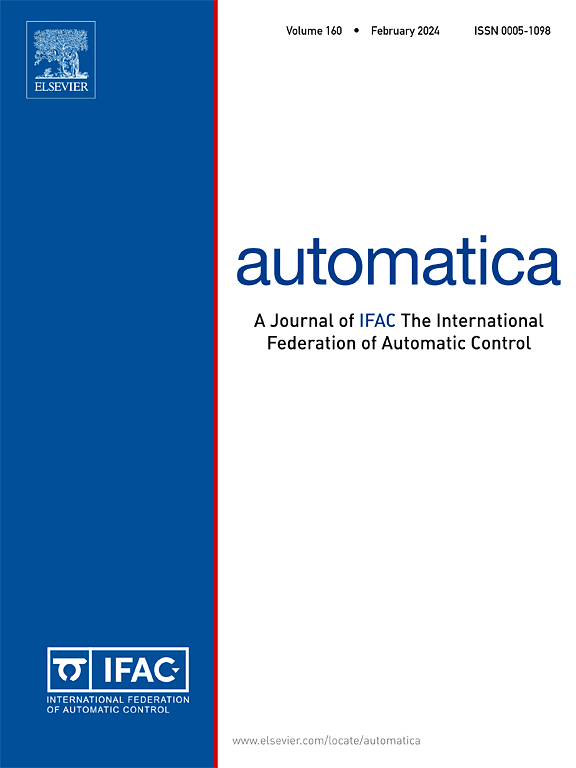Integrity attacks on state estimation with varying data access: From visibility to full restriction
IF 4.8
2区 计算机科学
Q1 AUTOMATION & CONTROL SYSTEMS
引用次数: 0
Abstract
This paper explores optimal integrity attacks with varying data access to innovations transmitted from smart sensors to remote state estimators. The data access refers to attackers’ capability or authorization to eavesdrop on and tamper with raw data packets. Unlike prior studies where the innovations were entirely intercepted and modified by attackers, different restrictions on data access are considered in this work. Within this context, entries of each innovation are separated into two parts: safe data and suspicious data. The first level of data access enables the interception of complete data, while modifications are limited to the suspicious data only. The second level restricts eavesdropping or tampering with the safe data, permitting only the interception and modification of suspicious data. To maintain stealthiness, the integrity attacks must adhere to stringent constraints, ensuring the statistical characteristics of the entire innovations remain unaltered. In this varying setting, optimal attack policies that make full utilization of available information are proposed and the corresponding coefficients are derived explicitly. Moreover, the optimality of proposed strategies is demonstrated rigorously, showing that no existing attack outperforms the proposed ones. Finally, the effectiveness of theoretical results is demonstrated through numerical examples and comparative studies.
求助全文
约1分钟内获得全文
求助全文
来源期刊

Automatica
工程技术-工程:电子与电气
CiteScore
10.70
自引率
7.80%
发文量
617
审稿时长
5 months
期刊介绍:
Automatica is a leading archival publication in the field of systems and control. The field encompasses today a broad set of areas and topics, and is thriving not only within itself but also in terms of its impact on other fields, such as communications, computers, biology, energy and economics. Since its inception in 1963, Automatica has kept abreast with the evolution of the field over the years, and has emerged as a leading publication driving the trends in the field.
After being founded in 1963, Automatica became a journal of the International Federation of Automatic Control (IFAC) in 1969. It features a characteristic blend of theoretical and applied papers of archival, lasting value, reporting cutting edge research results by authors across the globe. It features articles in distinct categories, including regular, brief and survey papers, technical communiqués, correspondence items, as well as reviews on published books of interest to the readership. It occasionally publishes special issues on emerging new topics or established mature topics of interest to a broad audience.
Automatica solicits original high-quality contributions in all the categories listed above, and in all areas of systems and control interpreted in a broad sense and evolving constantly. They may be submitted directly to a subject editor or to the Editor-in-Chief if not sure about the subject area. Editorial procedures in place assure careful, fair, and prompt handling of all submitted articles. Accepted papers appear in the journal in the shortest time feasible given production time constraints.
 求助内容:
求助内容: 应助结果提醒方式:
应助结果提醒方式:


